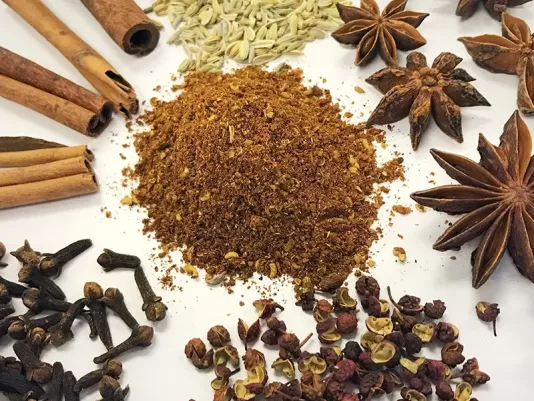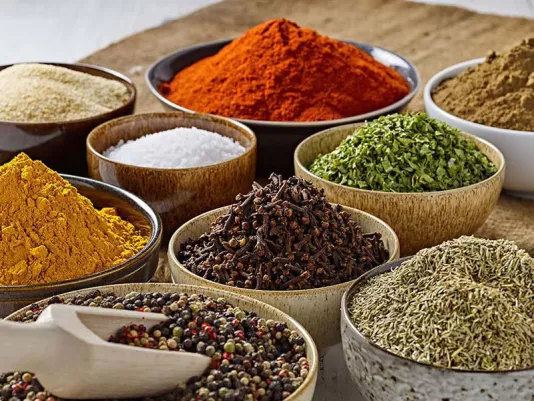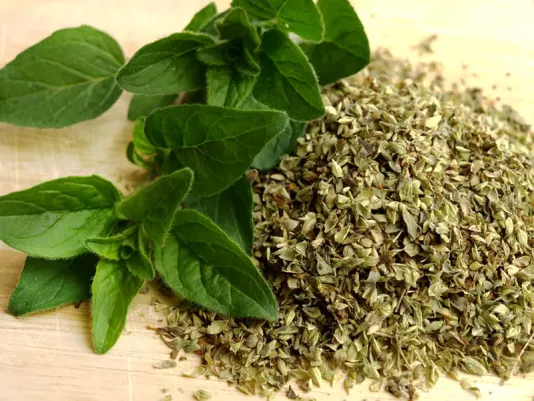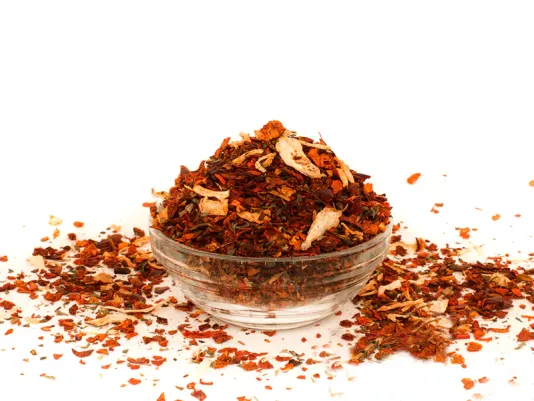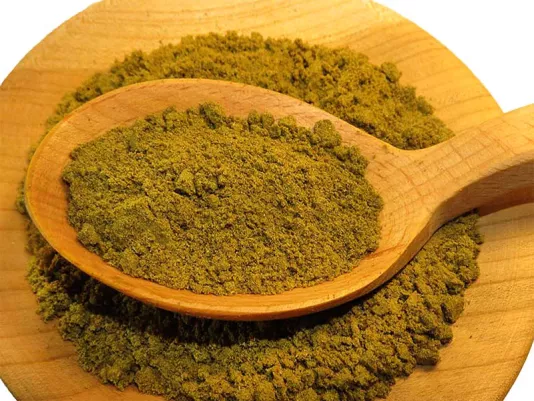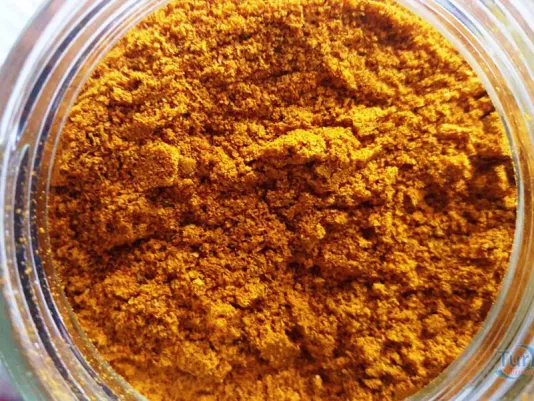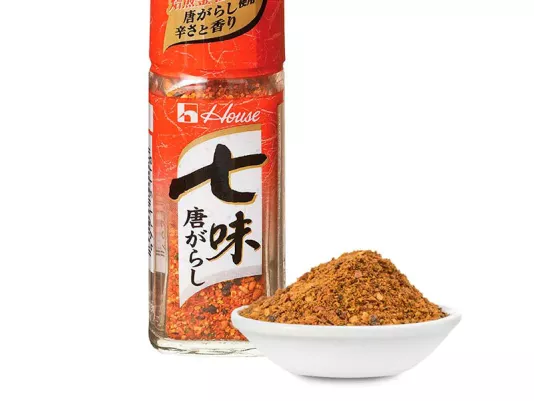Spice Blends
Spice blends have always been a real lifesaver for me when I need to quickly prepare a delicious and rich dish. I have often seen that the right combination of spices can replace dozens of separate jars and greatly simplify the cooking process. Over the years of my culinary practice, I have learned to trust such blends as garam masala, khmeli-suneli, or ras el hanout, as each of them was created based on centuries-old traditions. When I use Herbes de Provence, it feels as if the aroma of summer enters the house, and shichimi togarashi instantly adds spicy heat even to ordinary vegetables. For me, it is important that blends not only save time but also help maintain a balance of flavors. I like to keep several versatile mixes on hand and always know that if I add the right blend to a dish, the result will be harmonious and predictably delicious. That is why I consider spice blends an essential part of my kitchen and use them every day.
Different Types of Spice Blends
Popular Spice Blends Around the World
From my experience, I have learned that every world cuisine has its own signature spice blend that reflects its character and mood. For example, garam masala is the true heart of Indian dishes for me. I use it when cooking stewed meat and vegetables, and I am always amazed at how harmoniously the warm notes of cinnamon, cloves, cardamom, and coriander combine. In Mediterranean cuisine, Herbes de Provence are indispensable, and I add them to baked vegetables, sauces, or chicken. Their aroma of thyme, oregano, and rosemary reminds me of summer evenings in nature. In Georgian cuisine, khmeli-suneli, kharcho-suneli, and utskho-suneli hold a special place. I have often cooked kharcho, and it was the right spice blend that made it rich and expressive. It reflects not only the taste but also the soul of national cuisine. I also love discovering new combinations, such as Moroccan ras el hanout. When I add it to meat or vegetable stews, the dish instantly gains exoticism and captivates with its multi-layered aroma. I also want to mention Japanese shichimi togarashi, which has a bright spiciness and always adds character to dishes. I use it for noodles, rice, or even soups when I want to create a true Asian atmosphere. And curry, for me, is a universal blend that always comes to the rescue. I add it not only to classic sauces but also to cream soups and even marinades for chicken. Each of these blends is both history and tradition, and when I use them in my dishes, I feel as if I am traveling the world without leaving my kitchen.
Culinary Use of Spice Blends in Everyday Dishes
I like that spice blends make cooking quick and confident since they are already balanced. When I prepare simple meals for my family, I always turn to tried-and-true combinations. For example, I often add Herbes de Provence to baked potatoes or vegetables – the aroma becomes so expressive that the dish no longer needs complex sauces. If I cook meat, garam masala or curry always help give it a rich and refined taste. I especially love adding blends to tomato- or cream-based sauces because spices reveal themselves best there. Blends also help me diversify even everyday dishes. When I cook soup, I often add a bit of khmeli-suneli or utskho-suneli – and a simple broth turns into a true delicacy. I also experiment with ras el hanout, which brings exotic depth even to simple vegetable stews. I have found that just one spoonful of the right blend can completely change the impression of a dish. For family dinners, I love using curry in vegetable soups because it adds warmth and coziness. My daily menu always has room for small experiments. I can make breakfast with an omelet and add some spices to it, or prepare a light salad and enrich it with a note of shichimi togarashi to surprise my loved ones. For me, spice blends are a way to create new culinary impressions every day, even from the simplest ingredients. I confidently use them in any dish because I know the result will always be balanced and bright.
Health Benefits and Advantages of Spice Blends
Over many years of practice, I have found that spice blends provide not only taste and aroma but also health benefits. They combine the properties of many herbs and spices, making their effect more comprehensive. For example, garam masala contains cardamom, cloves, cinnamon, and coriander, which have anti-inflammatory and antibacterial properties. I like to add this blend to dishes when I feel my family needs immune support. Herbes de Provence, especially thyme, oregano, and rosemary, are rich in antioxidants and aid digestion, which is why I often use them in light vegetable dishes. Blends also make balanced eating easier. I always notice that the right spices reduce the need for too much salt since they naturally enhance flavor. For example, curry with turmeric and ginger helps the body fight inflammation and at the same time gives dishes a sunny color. I am convinced that even a small amount of such a blend makes a dish not only tastier but also healthier. Another advantage of blends is that they stimulate appetite and lift the mood. I have often noticed that the aromas of cinnamon, nutmeg, or cloves create an atmosphere of coziness, while the sharp notes of chili pepper excite and give energy. Thanks to this, I use blends not only as a culinary tool but also as a way to influence my family’s well-being. For me, it is important that food is not only delicious but also beneficial, and spice blends help achieve this naturally.
Storage and Use of Spice Blends at Home
I have found that spice blends require careful handling since their aroma and benefits depend on proper storage. I always keep them in tightly sealed glass jars, in a dark and dry place, away from sunlight and heat. This helps preserve their freshness and richness for several months. If the blend is already ground, I try to use it faster because it loses intensity over time. For long-term storage, I prefer blends in the form of whole seeds and herbs, which can be ground just before cooking. In everyday cooking, I use blends very practically. For a quick lunch, I always add a little curry or garam masala to vegetables or meat to create a rich flavor without extra effort. If I plan to bake a dish, my choice is Herbes de Provence or khmeli-suneli, as they reveal themselves best during long heat treatment. For marinades, I combine blends with fresh garlic and oil, creating a universal base for any meat or vegetables. I always recommend not being afraid of experiments: even a small amount of a blend can change the character of a dish, making it brighter and more interesting. For me, proper storage and use of blends is the secret to consistent results and inspiration for daily culinary discoveries.
My Favorite Blends and Tips for Choosing
Over the years of culinary experience, I have identified several blends that I cannot imagine my kitchen without. For example, garam masala always helps me create a deep and multi-layered flavor in meat dishes, while curry I use as a universal seasoning for soups, sauces, and even marinades. Herbes de Provence have become indispensable for me when cooking vegetables, as they add lightness and freshness. Shichimi togarashi opened up a new dimension of spiciness for me, and now I often use it in noodle or rice dishes. And khmeli-suneli I consider a true secret of harmony in soups and stews, as it gives richness without overloading the taste. When I choose spice blends, I always pay attention to their composition and quality. I recommend buying blends from trusted producers or making your own at home if possible. In ready-made blends, I always check to make sure there are no unnecessary additives or salt, since for me it is important to control the flavor. If a blend consists of whole seeds and dried herbs, it retains its aroma and benefits longer. I often grind blends right before use to get maximum freshness. My main secret is always trusting my senses. If the aroma of a blend pleases me and evokes positive emotions, I know it will become part of my dishes. I also recommend keeping several different blends at home for different occasions: versatile ones for daily meals, more complex ones for festive dishes, and spicy ones for moments when you want to experiment. In my kitchen, spice blends are a tool for creativity, and thanks to them, I can discover new culinary experiences every day.

